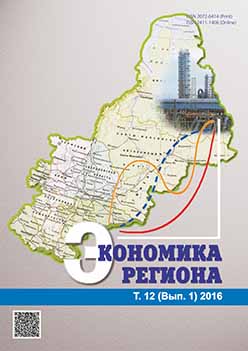Оценка потенциала экономико-географического положения регионов России
Assessing the Potential of Economic-Geographical Position for Russian Regions
Author(s): Stepan P. Zemtsov, Vyacheslav Leonidovich BaburinSubject(s): Economy, Geography, Regional studies
Published by: Институт экономики Уральского отделения Российской академии наук
Keywords: economic-geographical position; market potential; regions of Russia; gravity models; gross regional product;
Summary/Abstract: On the basis of the review of the scientific literature, the category of economic-geographical position (EGP) is formalized.The developed method of international and interregional EGP potential assessment is based on the use of gravity models; in thefuture, it can be widely used in regional studies to explore the benefits of the spatial location of objects (countries, regions, cities,etc.). These calculations for Russian regions have showed a significant spatial differentiation. The regions located near Moscowand St. Petersburg agglomerations have the maximum potential of interregional EGP, the potential decreases uniformly to theeast. The maximum international EGP potential is concentrated in the regions on the coast of the Black Sea, the Baltic Sea andthe Sea of Japan. The potential of the Kaliningrad region is in 5.6 times higher than it is for the Tyva Republic. In addition, it isrevealed a significant increase in the total EGP potential in the 2000s, and its shift to the southern regions of the Far East dueto the growth of the Asia-Pacific economies. The regions with a high and low efficiency of EGP use are revealed. The results areused to identify the connections between the EGP potential and the indicators of socio-economic development. It is found thata favorable EGP is one of the factors for gross regional productgrowth, the growth of investment and foreign trade, migrationgrowth and spread of new technologies. Formalizing EGP as a category allows to use it to predict the spatial changes in the socioeconomicdevelopment of Russia.
Journal: Экономика региона
- Issue Year: 12/2016
- Issue No: 1
- Page Range: 117-138
- Page Count: 22
- Language: Russian

